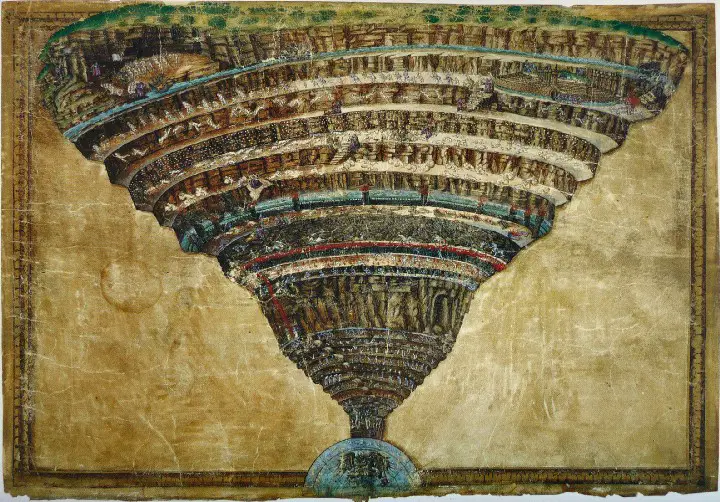 he Early Reinasence period brought around an interesting period where science and religion would once again come together, despite the strong beliefs of Catholics and their denial of science. Contemporary historians consider Dante’s Divine Comedy as the most famous work of art that is trying to truly define hell based on Christian beliefs and on ancient writings.
he Early Reinasence period brought around an interesting period where science and religion would once again come together, despite the strong beliefs of Catholics and their denial of science. Contemporary historians consider Dante’s Divine Comedy as the most famous work of art that is trying to truly define hell based on Christian beliefs and on ancient writings.
Is Hell big enough for all the Sinners?
The works of art including small novels and poems of Dante Alighieri were created between 1307 and 1320. In these, the artist is describing hell with explicit complexity, as if he actually went to visit hell himself. Since 1320 when his works had been completed, different scholars have toiled to map the physical features of hell.
Despite the complex geometrical theories present at the time, it was not enough to actually work out what some scholars described as a “fantasy world” created by Dante. The renaissance period encouraged scholars to take a more philosophical approach to the world of science and to the analyses of religious literature as well as art that presented biblical events.

For this reason, in 1588 the Catholic Church asked Galileo Galilei to use his mathematical knowledge in order to measure the dimensions of hell based on Dante’s paintings. At the time Galileo was only 24 years old, but a prodigy in the field of physics, even considered by some historians to be the most intelligent person of the 16th century.
The description of Dante’s inferno explained that hell was formed by 9 circles, with each circle getting smaller as it gets closer to Earth’s core. The deeper the circle the more vicious the inferno became. The last circle was destined for the most despicable human beings on Earth such as the roman soldier that killed Jesus (John 19:34).

Hell’s form is described by Christian literature to be in the shape of a cone that had been formed from a battle between God and Lucifer. When God hit Lucifer, he fell close to the city of Cuma in Italy, forming the entrance of hell and the impact created the cone shape presented by Dante’s painting.
The birth of Modern Physics
Galileo studied Dante’s art in depth and started arguing about the poet’s fantasy world with the use of science. Galileo wasn’t the first scholar to attempt measuring hell’s dimensions, but he was the first to understand that hell’s dimension has its own set of physics. Dante describes hell as a cone that spans from Earth’s inner core to the outside.
For this measurement, Galileo used Jerusalem as the Earth’s Centre and calculated the distance between Cuma (Italy) to be 2,700 Km (1,677 miles). Based on this, Galileo concluded that Hell’s cone would have a diameter of 5,550 Km (3,417 miles). Soon after, Galileo realized that there was a big error in his calculations. Based on the laws of Physics the massive cylinders descending to the center of the Earth — would, in real life, collapse under their own weight.
Galileo even took into account other calculations and attempts at measuring the diameter of hell but found out that all of them made the same mistake. He mentioned that the greatest scholars of the time, including himself, didn’t understand how real-world structures worked.
This error is what led Galileo to make some amazing breakthroughs into the world of physics, even creating some of the laws of physics that still apply to this day. Many years after Galileo published a book in 1638 entitled “Two New Sciences” in which he set the basis of mechanics within science by using such errors as examples. Thus, the era of Aristotle’s physics came to an end and gave birth to modern science.
Avid Writer with invaluable knowledge of Humanity!
Upcoming historian with over 30 million views online.
“You make your own life.”





